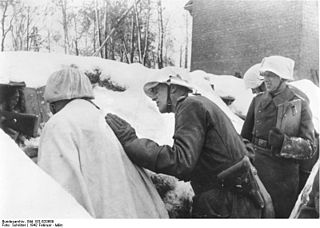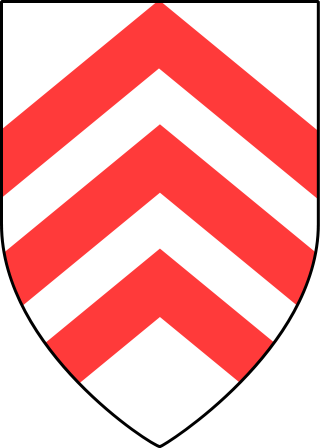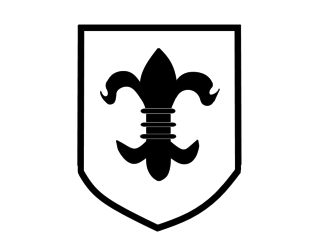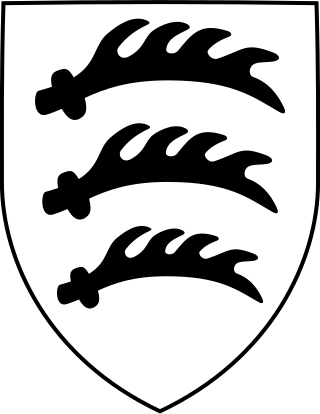
The Panzergrenadier Division "Großdeutschland", also commonly referred to simply as Großdeutschland or Großdeutschland Division, was an elite combat unit of the German Army that fought on the Eastern Front in World War II.
The German 206th Infantry Division, was a military unit that served during World War II. Like most German infantry units it had no motorization, and relied on leg and horse mobility.

The 29th Infantry Division was a unit of the German army created in the fall of 1936. It was based on the old Reichswehr 15th Infantry Regiment and drew its initial recruits from Thuringia. It was upgraded to 29th Motorized Infantry Division in the fall of 1937. The division was also known as the Falke-Division.

The 6th Panzer Division was an armoured division in the German Army, the Heer, during World War II, established in October 1939.

The 12th Panzer Division was an armoured division in the German Army, established in 1940.

The 12th Infantry Division – later known as the 12th Volksgrenadier Division – was a Wehrmacht military unit of Nazi Germany that fought during World War II. The division was formed in 1934. It participated in the invasion of Poland in 1939 and the 1940 campaign in France and the Low Countries. In the Soviet Union, the division joined Operation Barbarossa. The division was destroyed in the Soviet Operation Bagration in the summer of 1944. The division was re-activated in September 1944 and posted to the newly created Western Front.

The 18th Army was a World War II field army in the German Wehrmacht.

The 6th Infantry Division was a unit of the German Army during World War II.
The 19th Panzer Division was an armoured division in the German Army, the Wehrmacht, during World War II. It was created from the 19th Infantry Division.

The 26th Infantry Division was a pre-World War II German Infantry Division of the 1st mobilisation wave. It was mobilised for World War II on September 26, 1939, disbanded on September 10, 1944, near Radom and reformed as the 26th Volksgrenadier Division on September 17, 1944, near Poznań by absorption of the new 582nd Volksgrenadier Division of the 32nd mobilisation wave. Remnants of the Division entered U.S. captivity in the Harz region in 1945.
The 6th Luftwaffe Field Division was an infantry division of the Luftwaffe branch of the Wehrmacht that fought in World War II. It was formed using surplus ground crew of the Luftwaffe and served on the Eastern Front from late 1942 to June 1944 when it was destroyed during Operation Bagration.

The 83rd Infantry Division,, was a German reserve and security formation during World War II.

The 246th InfantryDivision was a division of the German Wehrmacht during World War II. Towards the end of the war, it was redeployed under the name 246th Volksgrenadier Division.

The 25th Infantry Division was a military unit of the German Wehrmacht. It was later reclassified to 25th Motorized Infantry Division, and in June 1943 to the 25th Panzergrenadier Division.

The 45th Infantry Division was an infantry division of the army of Nazi Germany during World War II. Towards the end of the war, the division was reassembled into a second iteration, the 45th Volksgrenadier Division

The 31st Infantry Division was a German infantry division of the Army during World War II. It participated in the invasion of Poland in 1939 then the invasion of France and the Low Countries in 1940. As part of Panzergruppe 2. of Army Group Centre, it was involved in the invasion of the Soviet Union in June 1941. After hard fighting throughout 1941 and 1942 it joined the 9th Army and fought in the Battle of Kursk in July and August 1943. Along with the rest of the 9th Army, the division conducted a fighting withdrawal for the remainder of 1943, during which it sustained heavy casualties. In the early stages of the Soviet Operation Bagration of June to August 1944, the 31st Infantry Division was destroyed, a fate which subsequently befell most of Army Group Centre. The division was officially disbanded on 18 July 1944.

The 197th Infantry Division was a Wehrmacht division in World War II. It was activated on 1 December 1939.
The 462nd Volksgrenadier Division was a Volksgrenadier division of the German Army during the Second World War, active from 1942 to 1944. It was initially known as Division Nr. 462 and subsequently became the 462nd Infantry Division before assuming its Volksgrenadier designation in late 1944.
The 361st Infantry Division was an infantry division of the German Army during the Second World War, active from 1943 to 1945. It was redesignated as a Volksgrenadier division in 1944. It saw active service on the Eastern Front when the Soviets launched Operation Bagration, during which it suffered significant losses. It later fought in France before being absorbed by the 559th Volksgrenadier Division on 10 March 1945.
The 154th Infantry Division, also known as Commander of the Replacement Troops IV, Division No. 154, 154th Reserve Division, 154th Division and 154th Field Training Division was an infantry division of the German Heer during World War II.

















